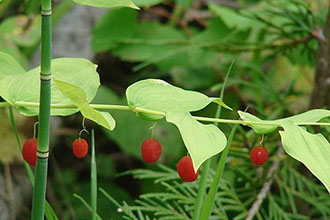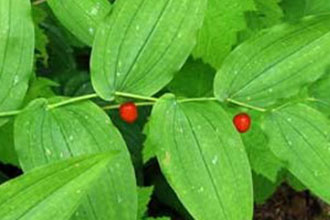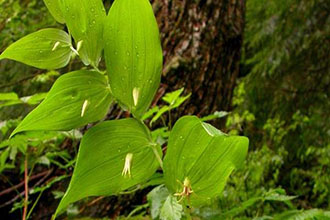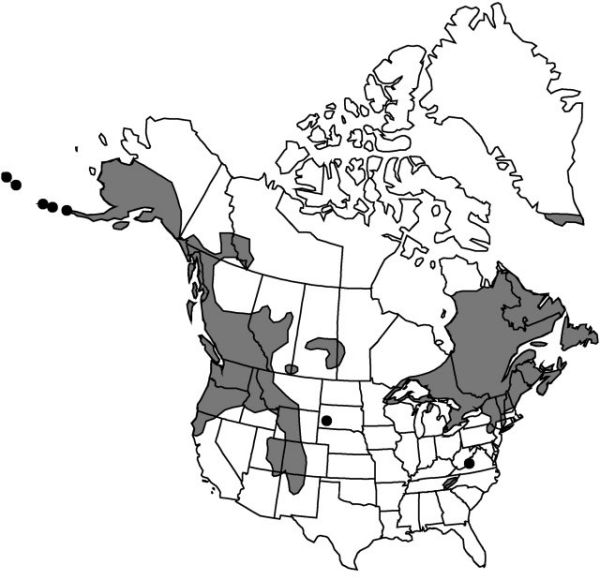Taxonomy: Kingdom Plantae (plants). Subkingdom - Tracheobionta (vascular plants). Superdivision - Spermatophyta (seed plants). Division - Magnoliophyta (flowering plants). Class - Liliopsida (monocotyledons). Subclass - Liliidae. Order - Liliales. Family - Liliaceae (lily family). Genus - Streptopus Michx. (twistedstalk). Species - Streptopus amplexifolius (L.) DC. (claspleaf twistedstalk).
Ecology: Moist, shaded areas; 250-1700 m. Klamath Ranges, High North Coast Ranges, High Cascade Range, n High Sierra Nevada, Modoc Plateau; to Alaska, central North America. May-Jun.



